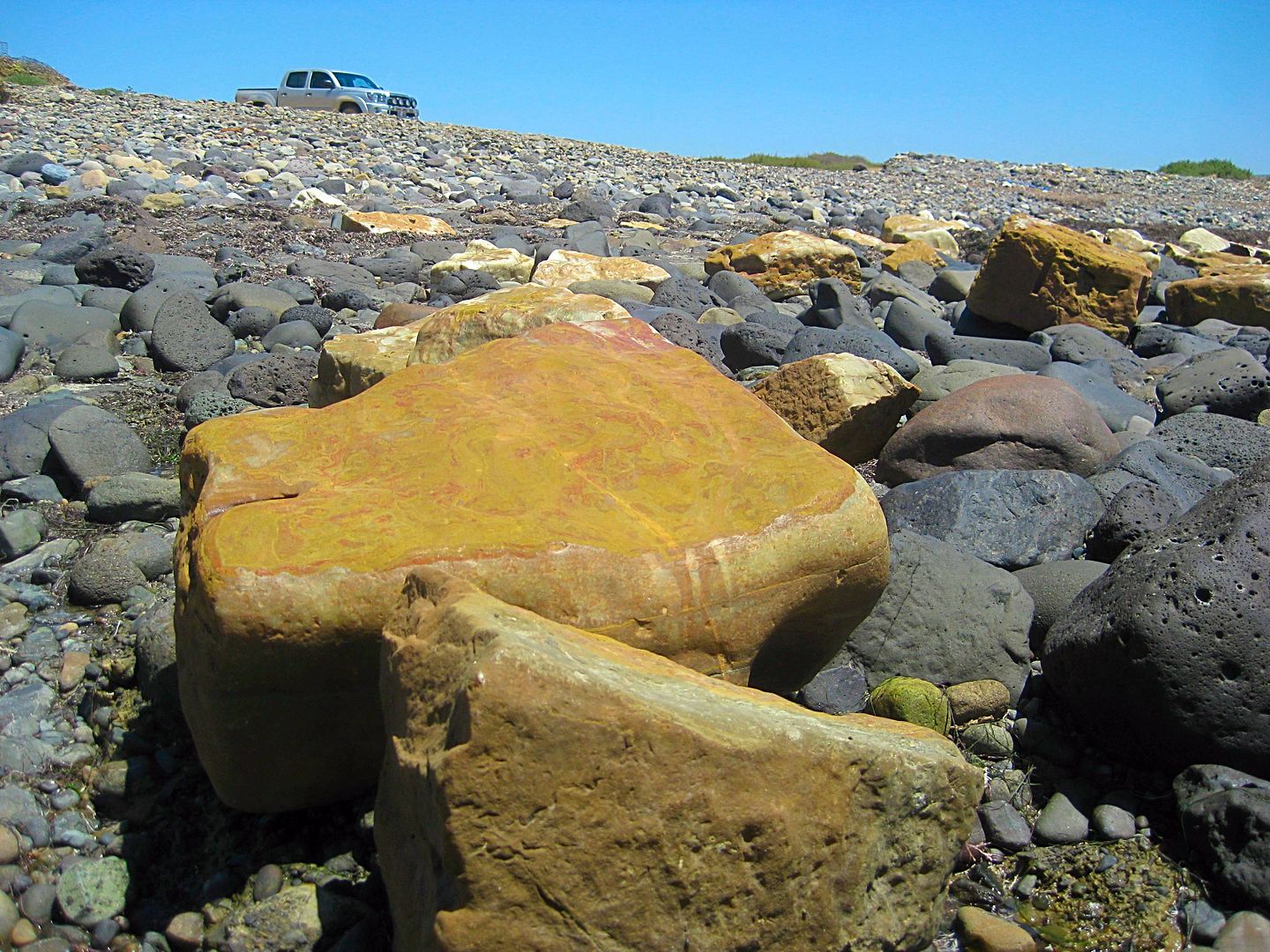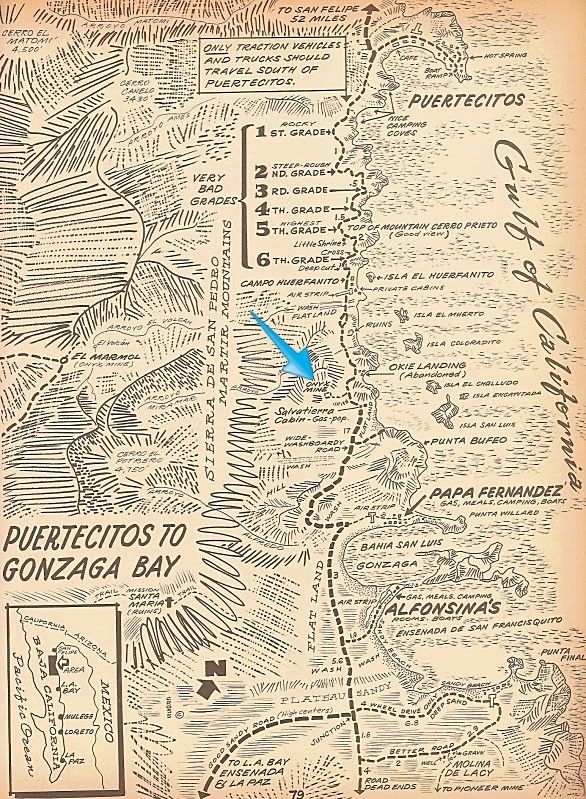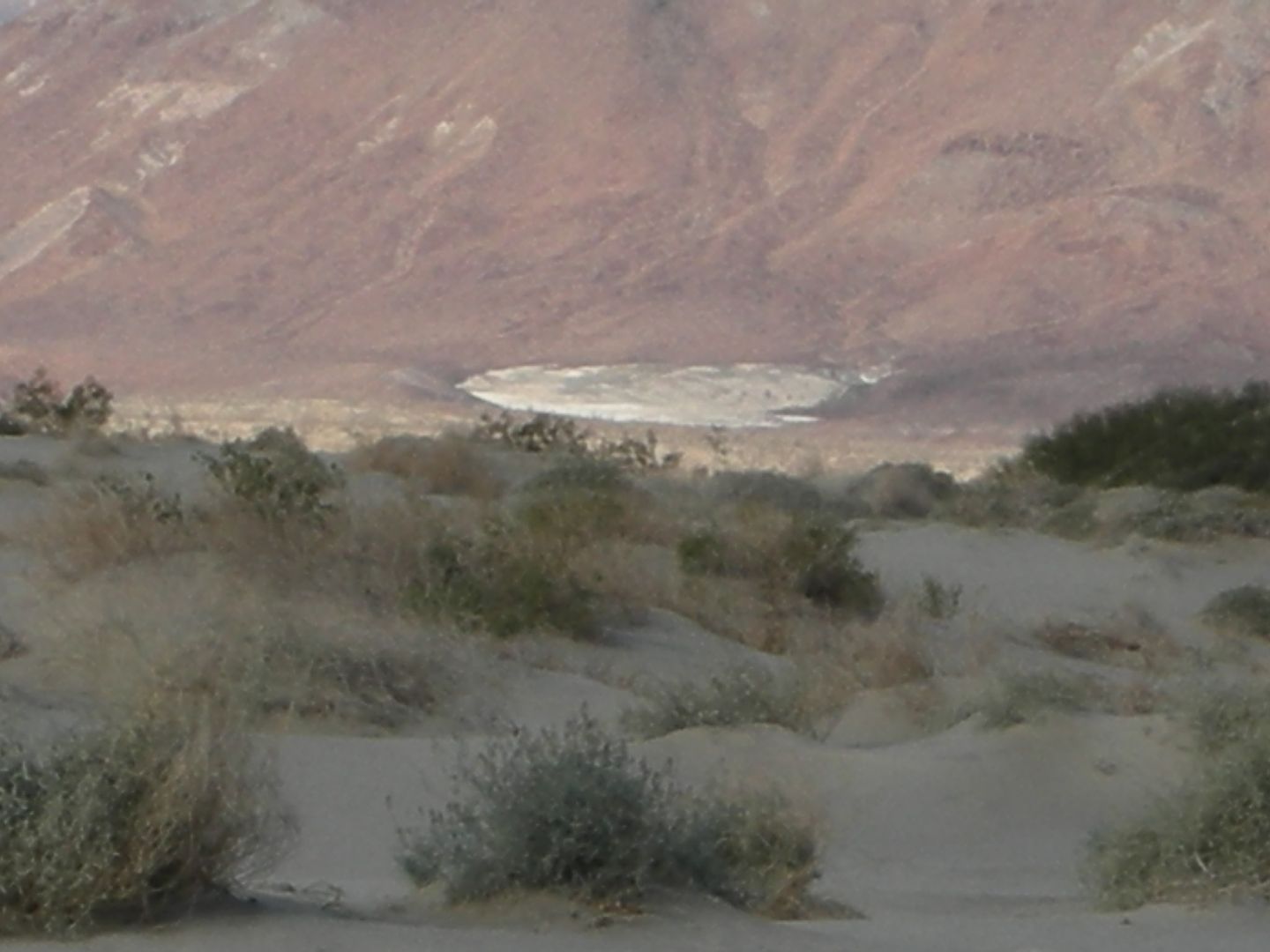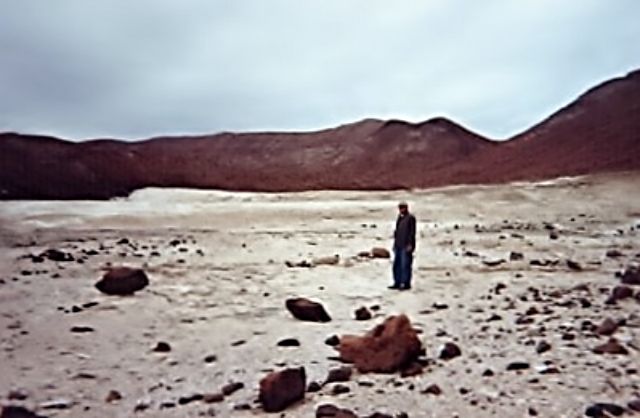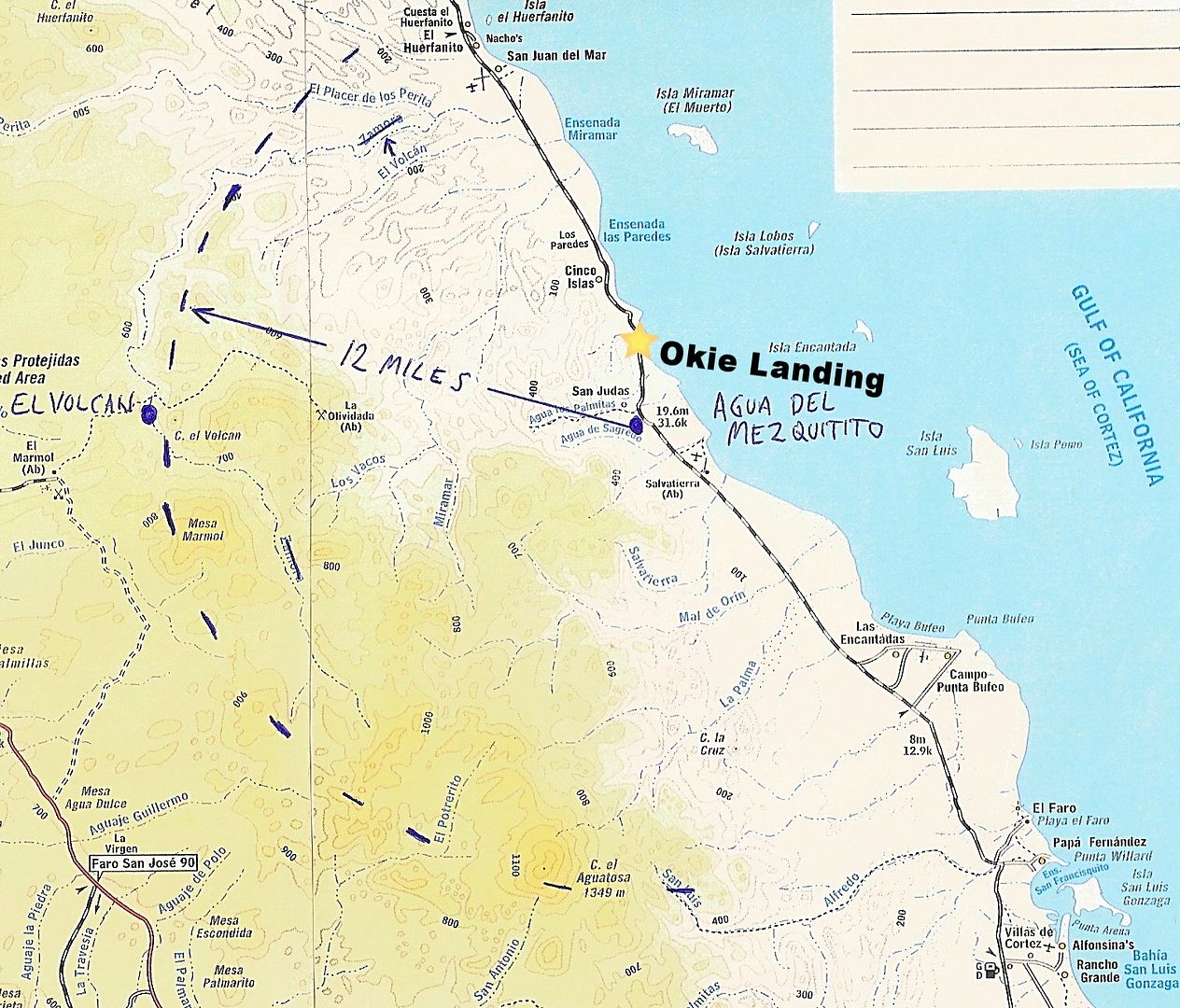

Derrick being used to lift onyx blocks into boats
The next stop was St. Augustine, twelve miles from the quarry. Here could be found good drinking and cooking water. The water at the onyx quarry generally had such a high soda content that we used the water at St. Augustine -- hauling it back to camp in large wooden buckets.
The first view of the El Marmol onyx quarry was impressive. As you came over the summit of the surrounding hills a picture unrolled that was hard to describe. The brilliant sunlight shining on exposed onyx transformed the great quarry into a field of glittering white. In the village, a tiny place, the hundred or more employees were housed in buildings constructed by the company. When we were there we lived in a house built of onyx until the big house was made ready for us.
The actual quarrying was the simplest part of the process in getting onyx from the quarries into a bonded yard at San Diego. The method used was called the "wedge and feather." While much of the onyx lay exposed upon the surface a greater part was eight or ten feet underground buried beneath masses of earth and rock, the accumulation of centuries. When this deposit had been removed holes would be drilled about every six inches and wedges inserted in them. Upon driving in the wedge the block would split along the line of the drilled holes and could then be lifted by the derrick and placed in position to be squared up.
Transporting the enormous blocks of onyx to the beach was a difficult and tedious haul. At first this was accomplished by means of mules. Sixteen mules to a wagon could haul ten tons of onyx to the beach, returning with a cargo of food from the boat or perhaps coming back empty. A journey of one hundred and ten miles, it took five days.
Because of the unfavorable coastline at Santa Catarina, vessels could not anchor close to shore so the onyx had to be conveyed out to them by means of surf boats for a distance of some fifteen hundred feet. The huge blocks were taken from the pile at the beach and loaded onto hand cars and pushed out to the end of the pier. Here the derrick came into use again by lifting blocks from the pier into ten ton lighter boats called pongos by the Mexicans and built especially for this purpose. Pasqual Cajames was the best surf man my father had working for him. He was always in charge of the surf boats, as he knew how to count the waves and how to pass through them.
Even in calm weather the surfing is a perilous task. Strong currents and high seas can stop the work for hours. In fair weather the average loading is one-hundred and seventy-five tons in seven hours. A ship usually carried about six-hundred and fifty tons, so days would be spent at the beach. When the onyx arrived in San Diego it was met by United States custom officials. Each block of onyx was unloaded, measured and consigned to the bonded yard where it remained until sold. The bonded yard enabled the Pedrara Company to export to Canada, Australia and Europe as well as to the United States.
In the Spreckels Theater in San Diego, the entrance, lobby, walls and ceiling are entirely of Pedrara onyx. The soft glowing light shining through the translucent onyx brings to mind childish dreams of a fairy palace -- forgetting all the hard work involved in quarrying and bringing the onyx here.
My travels in Baja California bring many things to mind. The long horseback rides over miles of untraveled country, the lovely wild flowers after a rain, the strange cacti and trees to study, the rattlesnakes to make excitement, the gold, silver, copper, and onyx mines to learn about, the desert winds, the wild surf and cool sea breezes to enjoy. One would look up at the golden moon and wonder about all that is good, getting nearer to God and to nature and knowing there are many things which make one glad to be alive. The poet Rudyard Kipling perhaps said it best:
"Something hidden, go and find it.
Go and look behind the ranges
Something lost behind the ranges
Lost and waiting for you -- Go!"


